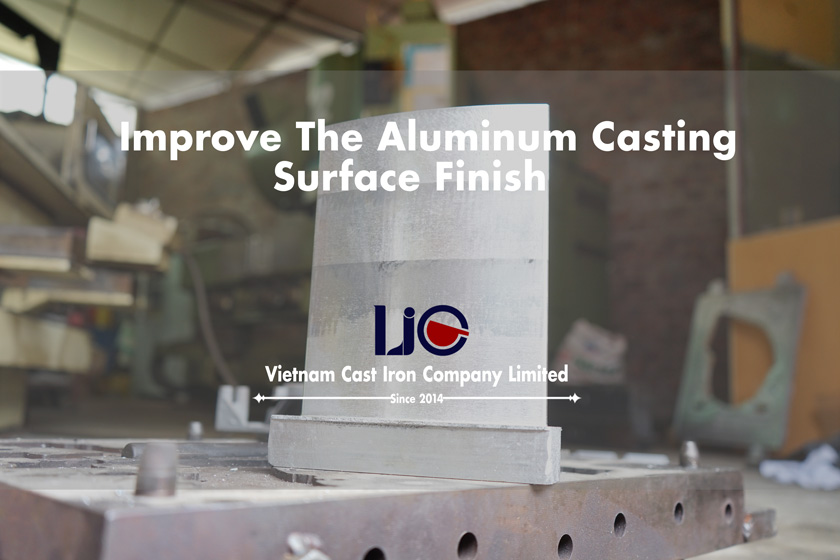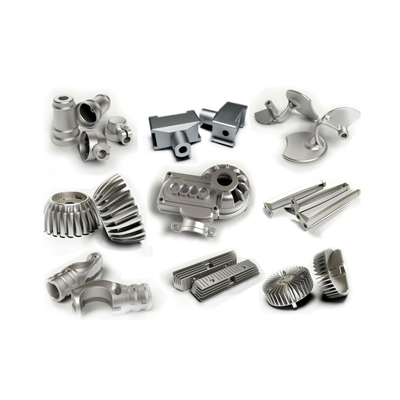The history of Aluminum Casting and its impact today
Wiki Article
Understanding the Benefits and Selections of Aluminum Castings in Market
Aluminum castings have actually come to be increasingly essential across different markets due to their distinct residential or commercial properties and producing adaptability. Their light-weight and corrosion-resistant nature makes them ideal for demanding applications. Different casting methods enable accurate and complex layouts. As sectors advance, recognizing the series of light weight aluminum spreading choices and their benefits is vital. This exploration raises questions about their future duty in production and sustainability. What lies in advance for aluminum in these fields?The Fundamentals of Aluminum Casting Processes
Although aluminum casting procedures differ in technique, they all share a typical objective: to transform liquified aluminum into accurate shapes and components. The key techniques of light weight aluminum casting include sand spreading, pass away spreading, and investment spreading. In sand casting, mold and mildews are created making use of sand, permitting complex layouts but frequently resulting in a rough surface area coating. Die casting uses high-pressure injection of molten light weight aluminum into steel molds, producing high accuracy and smooth surfaces, ideal for mass production. Financial investment casting, or lost-wax spreading, involves producing a wax pattern covered with a ceramic shell, giving exceptional information and dimensional precision. Each method has its details applications and considerations, consisting of cost, production quantity, and complexity of the forms produced. Understanding these fundamental techniques is vital for sectors that rely upon aluminum castings to satisfy their layout and functional requirements.Key Benefits of Utilizing Aluminum Castings
Aluminum castings supply numerous advantages that make them a preferred choice in various industries. Among the vital benefits is their lightweight nature, which enables for less complicated handling and decreased shipping prices. This particular adds to enhanced energy performance, especially in vehicle and aerospace applications. In addition, light weight aluminum shows outstanding corrosion resistance, extending the life-span of elements and lessening maintenance demands.An additional advantage is the adaptability of aluminum castings, which can be built right into complex shapes, allowing ingenious layouts that conventional materials may not accommodate. The thermal and electrical conductivity of aluminum likewise makes it excellent for applications calling for warmth dissipation or reliable electric links. Aluminum castings are recyclable, aligning with sustainability objectives and lowering ecological influence. Generally, the mix of toughness, sturdiness, and versatility makes aluminum castings a vital element in contemporary manufacturing techniques throughout several fields.
Typical Sorts Of Aluminum Castings
Aluminum castings are generated through different techniques, each fit for various applications and needs. Among the most common methods are sand spreading, which uses versatility and cost-effectiveness, and die spreading, recognized for its precision and efficiency. Recognizing these procedures is vital for picking the suitable spreading approach for specific commercial needs.Sand Casting Refine
A considerable section of light weight aluminum castings in industry is generated through the sand spreading procedure, which is renowned for its flexibility and cost-effectiveness. This method includes creating a mold from a sand combination, allowing for the production of complex shapes and big parts. Sand spreading is specifically beneficial for tiny to medium-sized manufacturing runs, as it requires very little initial financial investment in tooling. The procedure begins with pattern making, adhered to by mold preparation, putting molten light weight aluminum, and lastly, cooling down and finishing. The high thermal conductivity of aluminum assurances also cooling, lowering the risk of flaws. Sand casting remains a preferred selection for suppliers seeking efficiency and flexibility in their aluminum spreading applications.Die Casting Techniques
Die casting techniques represent a very efficient method for generating aluminum castings, particularly suited for high-volume manufacturing. These techniques largely consist of 2 typical types: warm chamber and chilly chamber pass away casting. In warm chamber pass away spreading, the liquified aluminum is infused into the mold from a storage tank that is heated, making it ideal for low-melting-point alloys. Conversely, cold chamber pass away casting includes putting the molten aluminum right into a separate chamber prior to injection, which fits higher melting-point products. Both approaches supply accuracy in forming intricate geometries and attaining excellent surface finishes. Additionally, pass away spreading is recognized for its quick cycle times, lowering manufacturing expenses while preserving consistency in quality across large quantities of components.Applications in the Automotive Sector
Transforming car style and performance, aluminum castings play an important role in the automobile sector. These castings add substantially to weight reduction, boosting fuel effectiveness and general automobile dynamics. Key applications consist of engine blocks, transmission real estates, and suspension parts, where their lightweight nature and toughness are critical.Aluminum castings also enable complex geometries, allowing manufacturers to develop intricate layouts that optimize air movement and minimize drag. This ability is specifically advantageous in electrical and hybrid vehicles, where performance and effectiveness are extremely important.
Additionally, the deterioration resistance of aluminum extends the life-span of automobile components, decreasing upkeep prices and boosting lorry reliability. The versatility of light weight aluminum castings supports both automation and customized applications, making them a favored selection amongst automotive engineers and designers. Aluminum Casting. As the industry remains to innovate, light weight aluminum castings will continue to be an important component in the pursuit of sophisticated automotive modern technologies
Aerospace Industry Usage
In the aerospace sector, light weight aluminum castings are essential to the style and performance of airplane components. These castings are used in numerous applications, including engine components, structural elements, and indoor fittings. Their lightweight nature adds to enhanced fuel performance and total efficiency, which is crucial in aerospace design.Aluminum castings additionally offer exceptional strength-to-weight proportions, permitting suppliers to produce intricate layouts without jeopardizing architectural integrity. The capability to create intricate geometries makes light weight aluminum casting a favored selection for elements that call for accuracy and integrity.
Furthermore, aluminum's resistance to rust enhances the durability of aerospace components, minimizing maintenance expenses and boosting safety (Aluminum Casting). The spreading process permits high-volume manufacturing, meeting the market's needs for efficiency. Generally, aluminum castings play a crucial role ahead of time aerospace modern technology and optimizing aircraft layout, adding to the industry's continuous innovations

Advantages Over Other Materials
Aluminum castings provide considerable benefits over various other materials, making them a recommended option in various sectors. Among the primary benefits is their lightweight nature, which contributes to decreased energy usage and boosted performance in applications such as auto and aerospace. Furthermore, light weight aluminum displays superb deterioration resistance, enabling prolonged resilience and minimized maintenance expenses.The material's superior thermal and electrical conductivity even more boosts its appeal, especially in applications requiring warm dissipation or effective power transfer. Aluminum Casting. Aluminum castings likewise offer superb dimensional security, guaranteeing accurate tolerances and decreasing the probability of issues throughout the production procedure
Additionally, the convenience of aluminum enables intricate forms and elaborate styles, which can be attained via different casting approaches. This versatility makes aluminum a valuable alternative for makers aiming to introduce while maintaining cost-effectiveness and quality. To end, light weight aluminum castings stand out as a result of their distinct mix of homes that accommodate diverse industrial requirements.
Future Fads in Aluminum Casting Innovation
Future patterns in aluminum casting modern technology are increasingly focused on automation and the development of advanced alloys. Automation stands to improve performance and precision in casting procedures, reducing labor costs and improving item uniformity. Concurrently, advancements in alloy solutions promise to expand the variety of applications for aluminum castings, addressing websites certain performance demands in numerous sectors.Automation in Casting Processes

Advanced Alloys Advancement
With the continuous development of material scientific research, the advancement of innovative alloys is established to transform light weight aluminum casting modern technology significantly. These innovative alloys are created to enhance mechanical residential or commercial properties, corrosion resistance, and thermal security, providing to diverse commercial applications. Researchers are concentrating on hybrid alloys that include elements such as magnesium, silicon, and zinc to attain peak performance. Furthermore, advancements in computational modeling and simulation are allowing the forecast of alloy habits under numerous conditions, enhancing the layout procedure. The combination of reusing modern technologies is additionally coming to be crucial, permitting suppliers to create high-performance light weight aluminum castings while minimizing environmental impact. As these fads continue, the light weight aluminum casting market is likely to witness substantial renovations in performance, sustainability, and product high quality.Frequently Asked Concerns
Just How Is Aluminum Casting Eco Friendly?
The question of light weight aluminum casting's environmental kindness develops from its recyclability and reduced energy usage compared to other steels. In addition, advancements in lasting methods further boost its environment-friendly track record within making processes.What Is the Typical Lifespan of Aluminum Castings?
The normal life expectancy of light weight aluminum castings differs based upon application and setting, usually varying from several years to decades. Factors such as exposure to harsh components and mechanical anxiety can substantially affect their resilience and durability.Can Aluminum Castings Be Recycled?
Aluminum castings can certainly be recycled. This process significantly decreases waste and conserves resources, permitting suppliers to recycle products efficiently. Reusing news light weight aluminum castings official source contributes to sustainability and reduces the environmental influence related to aluminum production.What Are the Typical Problems in Aluminum Castings?
Common defects in light weight aluminum castings include porosity, shrinkage, imbalance, and surface imperfections. These problems can develop from inadequate pouring methods, inappropriate alloy composition, or inadequate air conditioning, inevitably impacting the high quality and efficiency of the end product.Exactly how Do I Select the Right Aluminum Casting Process?
Picking the right aluminum casting process requires examining manufacturing volume, component complexity, and wanted properties. Factors such as cost, lead time, and product qualities additionally influence the choice, making sure optimal outcomes for particular applications.Report this wiki page